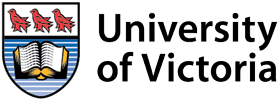Fire Ecology for Environmental Restoration
Code: FEER337
Apply this course towards:
Fire Ecology for Environmental Restoration
Course description
Creating 21st century fire and forest management through nature-based solutions and ecosystem decoding.
In this 10-week course, you will learn practical skills and knowledge to understand the effects of fires on natural environments through ecosystem decoding. The course also explores the impacts of, and the interactions between, fire management and forest management over the past 100+ years.
By the end of the course, participants will be able to prepare communities to respond to wildfire threats and create ecosystem resiliency through restoration methods—in fire and forest landscapes with multiple ecological objectives. This course will also look at "the double edge sword" of fire and forest management.
All of the above topics will integrate information from four knowledge streams:
- old growth forest ecosystems (clean code, baseline)
- at least 60 years of western ecological knowledge
- hidden and forgotten historical reports (e.g., logging, post-logging fires, wildfires, post-fire salvage logging, and tree establishment and growth)
- 14,000 years of First Nations’ traditional ecological knowledge
Format
This course will be offered in a blended format with asynchronous online learning and in-person field days.
Learning objectives
Upon successful completion of this course, you will be able to:
- Understand prehistoric forest changes, 700 years of fire history, and impacts of 180 years of Colonial fire and forest management
- Define and examine fires as an ecosystem process
- Decode and describe fires and natural/second growth forests and their attributes
- Identify and interpret the relationships between fire and climate change: Amplification
- Value and understand First Nations: Cultural Burns and Traditional Ecological Knowledge
- Understand The Use of Fire as a Ecosystem Restoration Tool
- Understand the Applications of conventional/novel Forest Management Techniques such as Ecological Thinning to Mitigate Wildfire and Reduce Fuel Loading and Risks
- Understand the Applications of conventional/novel Forest Management Techniques such as Ecological Thinning to Retain or Create Forest Level Structural Elements that allow Ecological Processes to return and begin functioning, while providing Habitat Possibilities, and the full production of Ecological Goods & Services
- Use Ecosystem Decoding to determine Ecosystem Needs and Possible Restoration Actions
- Understand and assess Fire and Forest Landscapes, recommend restoration and mitigation strategies, and create a Restoration Plan for either a Fire or Forest Landscape
Registration details
Select your offering:
You have already registered for this course.
This item is already in your shop cart.
You're already on the waiting list for this item.
Sorry, this section is full.
Online registration temporarily unavailable
Sorry, this course is not available for registration at this time.
This course is in progress. Please contact us for more details.
Online registration is closed for this course. You may still be able to register by phone. Call 250-472-4747 to find out.
This course is on your wish list. You will be notified when this course becomes available.
Want to receive notification when this course becomes available?
{{ loggedIn ? 'Add to wish list' : 'Sign in/create a new account to add to wish list' }}Info you should know:

